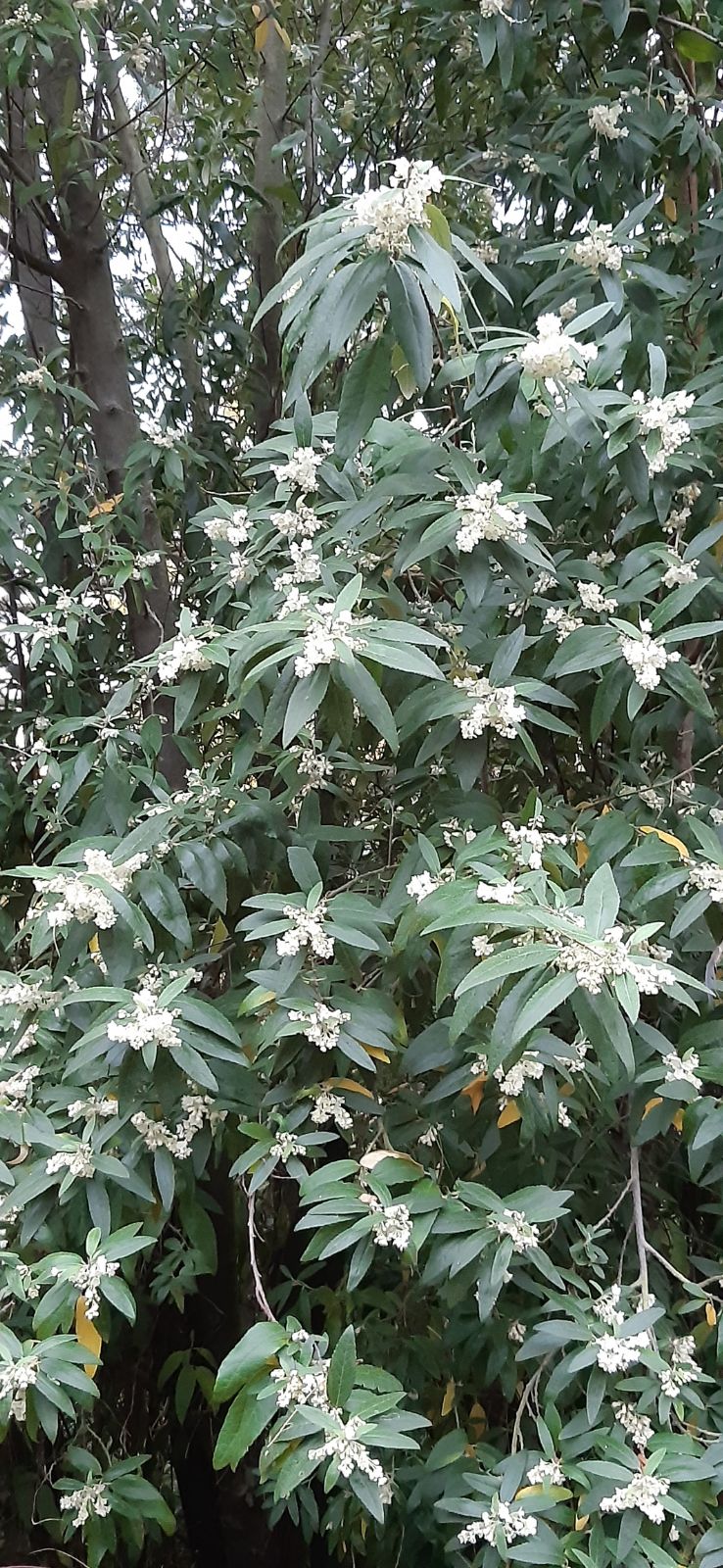Asterotrichion
Sponsor
Kindly sponsored by
a member of the International Dendrology Society
Credits
Julian Sutton (2022)
Recommended citation
Sutton, J. (2022), 'Asterotrichion' from the website Trees and Shrubs Online (treesandshrubsonline.
Family
- Malvaceae
An erect, evergreen, dioecious large shrub or small tree endemic to Tasmania, with racemes of small, creamy white flowers, and a conspicuous covering of stellate hairs on branchlets, leaf undersides and inflorescences (Curtis & Morris 1975; Jordan 2019).
The genus Asterotrichion has a single living species, the Tasmanian A. discolor (q.v.), and no known fossil history (Rozefelds 2008). It belongs to Tribe Malveae of the Malvaceae, and is a rare example of a woody genus in a group dominated by herbs and subshrubs (e.g. Malva including the formerly segregated Lavatera) (Stevens 2021). It is closely related to the New Zealand genus Plagianthus and the Australian Gynatrix – they are collectively known as the Plagianthus alliance, and have sometimes all been included in Plagianthus. Asterotrichion differs from the others in lacking stipules (Rozefelds 2008).
The Plagianthus alliance appears to be sister to the important New Zealand genus Hoheria. In turn, this group including Hoheria is sister to Lawrencia, Australian shrubs and subshrubs (Wagstaff & Tate 2011). The implication is that either the ancestors of Plagianthus and Hoheria migrated separately from Australia to New Zealand, or their common ancestor migrated to New Zealand, followed by a reverse migration by an ancestor of Asterotrichion and Gynatrix. Rozefelds (2008) considers Asterotrichion one of the Tasmanian neoendemics which probably evolved in situ in response to the drying of the Tasmanian climate from the Miocene epoch (23–5 MYA) onwards. Such species are concentrated in the eucalypt forests of eastern Tasmanian, in contrast to the much older palaeoendemics which are mainly found in the aseasonal-wet climate of the west.
Klotzsch’s 1841 generic name derives from the Greek aster (a star) and trichion (a small hair), referring to the conspicuous stellate hairs.


